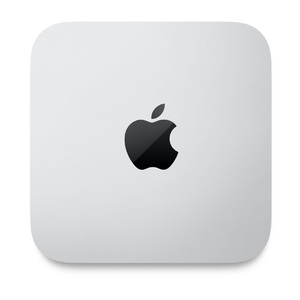The .27". iMac Desktop Computer .from .Apple .is an all-in-one desktop computer with an ultra-slimunibody design. Measuring at just 5mm at its edges, the iMac has 40% less volume than the 2011 iMac. The body of the iMac isn't the only thing that got thinner. The LCD display is now 5mm thinner, and Apple also removed a 2mm gap between the LCD panel and the glass to save even more space.
The 27". widescreen display features LED backlighting for vibrant, accurate color. With in-plane switching (IPS) technology, the iMac has a wide 178°. viewing angle. The screen has a 16:9 aspect ratio and a 2560 x 1440 native resolution, supported by a dedicated NVIDIA GeForce GT 755M graphics card with 1GB of GDDR5 memory.
Powered by a quad-core 4th-generation Haswell 3.2GHz Intel Core i5 processor, the iMac takes advantage of each core to optimize performance. The 4th-gen Haswell Intel processor also allows for low voltage usage for better energy efficiency. The system also has 8GB of 1600MHz DDR3 RAM, a 1TB 720000rpm hard drive, 10/100/1000Mbps Gigabit Ethernet, 802.11ac/a/b/g/n Wi-Fi, a FaceTime HD camera, dual microphones and built-in stereo speakers.
For ports, the iMac has dual Thunderbolt ports (which also double as Mini DisplayPorts) and four USB 3.0 ports. You'll be able to connect with various compatible components. If you would rather go wireless with your peripherals, you can use Bluetooth 4.0 technology where compatible. This iMac comes with a Mac OS X operating system preinstalled, which features a user-friendly interface.
Design :Impossibly Thin
Just a mere 5mm at its edge, the iMac has up to 40 percent less volume than the 2011 iMac. Using an advanced welding method called friction-stir welding, Apple was able to join the front and the back of the iMac together directly
Re-Engineered Screen
The display on the iMac is no longer behind the cover glass, but it's actually right up against it. The LCD itself is 5mm thinner than before and using an advanced process called full lamination, Apple was able to eliminate a 2mm gap between the LCD and the glass. Full lamination has a second major benefit, that it eliminates reflection of light off the LCD panel and off the back of the display's cover glass. Apple also reduced reflection off the front of the glass without compromising color quality. Instead of applying an antireflective coating to the glass in the conventional way, Apple adapted a process commonly used on camera lenses called plasma deposition, which results in 75 percent reduction in reflectivity and vibrant, accurate colors.
True-to-Life Colors
None of these innovations would matter much if the iMac display didn't deliver vivid, true-to-life color. Which is why Apple puts every single display through an exacting color-calibration process using three state-of-the-art spectroradiometers: one to measure gamma, one to measure white point, and one to check the work of the other two. This equipment is tuned to meet color standards recognized around the world for precision and accuracy
A Display of Excellence
The 27". screen of the iMac features an innovative display design which reduces reflection by 75 percent. In addition, the LCD now sits right up against the glass allowing the picture so content looks crisp and clear. The display also uses in-plane switching (IPS) technology resulting in a bright picture with vivid, true-to-life color from a wide 178°. viewing angle. The LED backlighting also offers instant-on, uniform brightness
















